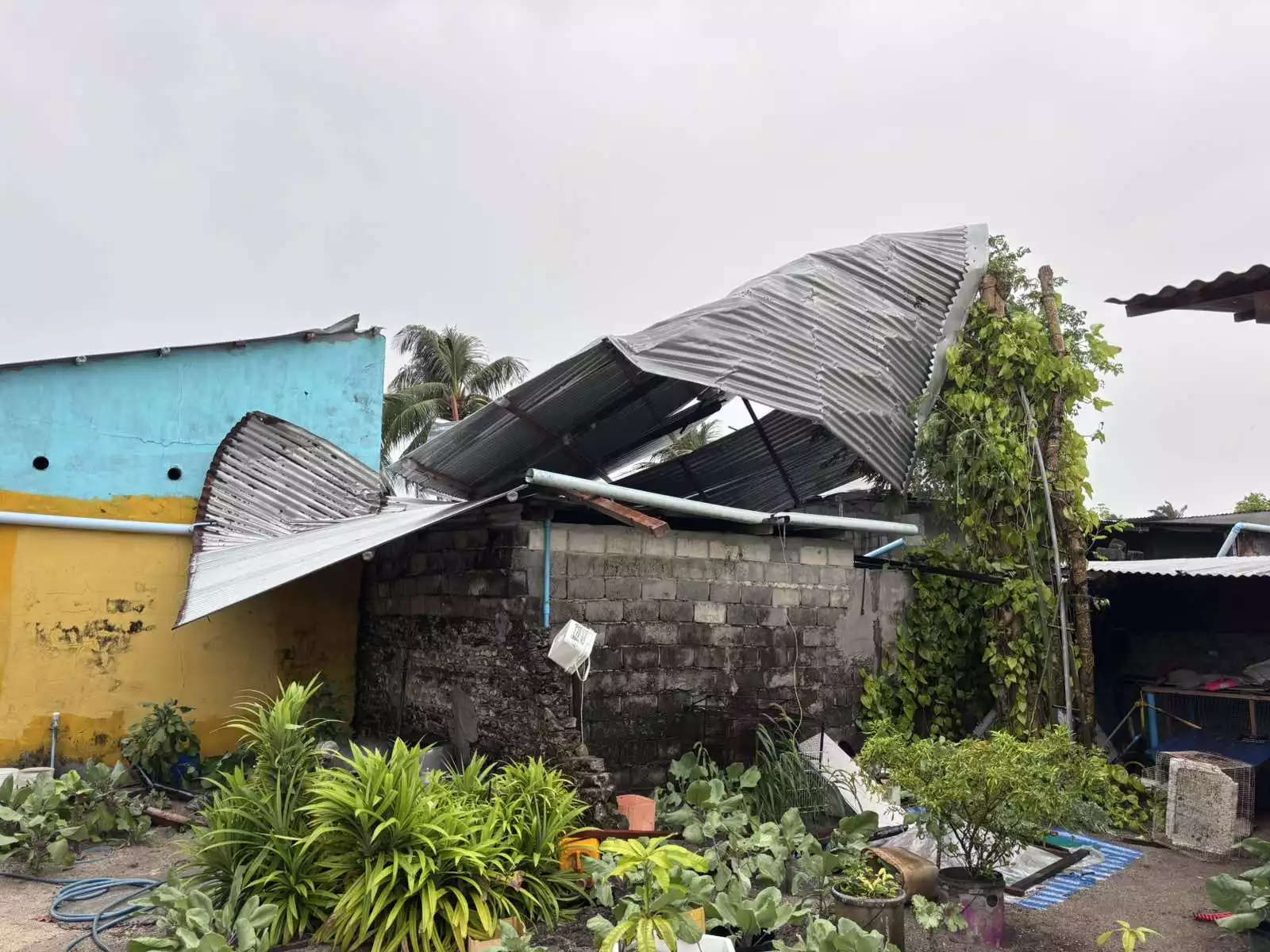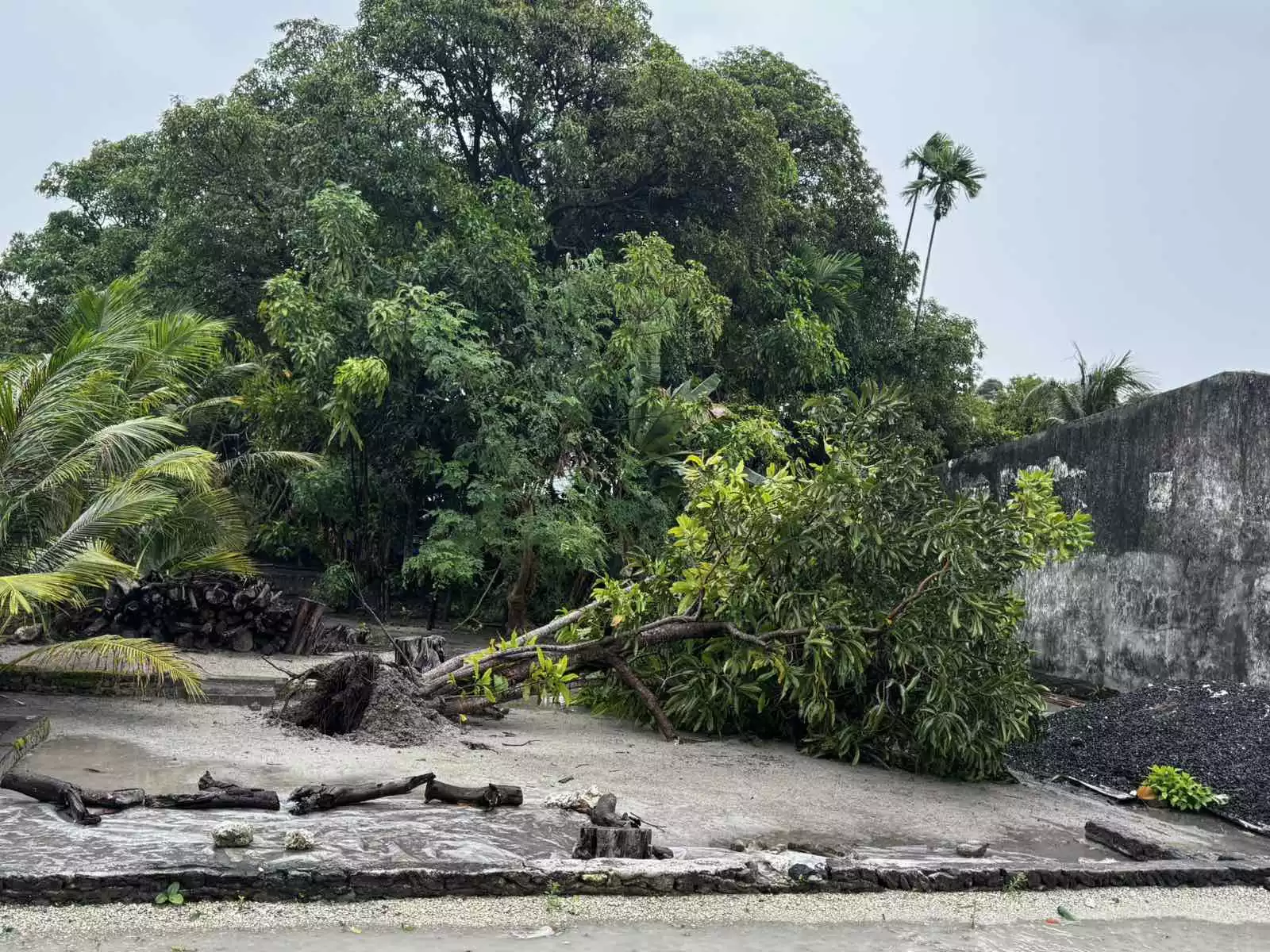
A torrential rainstorm currently sweeping across the Maldives has caused significant damage across several islands, disrupting daily life for communities nationwide.
The Maldives Meteorological Service (MMS) reported that strong winds swept across the capital Malé City and several outlying islands nationwide on Friday, with gusts exceeding 50 miles per hour in some regions. According to MMS data, Hulhumalé and Hulhulé recorded wind speeds of 52 mph, while Hanimaadhoo and Makunudhoo in Haa Dhaal Atoll experienced the highest gusts at 54 mph. Other affected areas included Nilandhoo in Faafu Atoll (48 mph), Dhiffushi in Kaafu Atoll (49 mph), Kaadedhdhoo in Gaaf Dhaal Atoll (46 mph), Gan in Seenu Atoll (46 mph), and Kulhudhuffushi City in Haa Dhaal Atoll (47 mph).
Hanimaadhoo Island Council President Abdul Sattar Hassan reported that strong winds tore through the island on Friday, toppling trees and blowing off the roof of the Nooru Mosque.
Sattar confirmed that conditions in Hanimaadhoo have since returned to normal and that no injuries were reported.
Regarding Makunudhoo, Island Council Member Mohamed Shammah stated that the overall situation remains stable. He noted that while Friday’s storm brought extremely strong winds, safety precautions were implemented promptly. The roof of a hut was blown off during the storm, he added, but no further damage was reported.

Abdul Kareem Ali, Vice President of the council of Muraidhoo island of Haa Alif Atoll, reported that a storm surge on Friday afternoon damaged four homes on the island, with their roofs blown off due to severe weather conditions. He noted that while two of the homes have since been repaired, the residents of the remaining two have been temporarily relocated to stay with relatives. One of the affected homes was occupied by a single woman, and the other by a woman and her child.
Abdul Kareem stated that the council building's roof was also blown off, causing significant damage. He added that a 75-inch TV, an air conditioner, and a CPU in the council building's meeting room were damaged.
Abdul Kareem Ali noted that a report on the storm damage is currently being prepared and highlighted the strong community support being extended to affected households. He stated that recovery efforts, including cleanup operations, are actively underway to restore normal conditions on the island. Kareem also confirmed that a few individuals sustained minor injuries while clearing fallen trees and debris in the aftermath of the storm.
As the southwest monsoon intensifies, bringing damage to several islands across the Maldives, the Maldives Meteorological Service has warned of continued thunderstorms across multiple regions, with the potential for heavy rainfall on some islands.

The department also issued a white alert on Saturday afternoon from Haa Alifu Atoll to Thaa Atoll.
MMS has forecast winds from the west and northwest ranging between 15 and 25 mph, with gusts potentially reaching 45 to 55 mph during storms. The department also warned of rough sea conditions, with wave heights expected to reach between five and eight feet.
In light of the potential for tidal waves to impact some islands during high tide, authorities have urged all individuals, particularly seafarers, to exercise caution and stay alert to changing weather conditions.
Maldives experiences heavy rain showers and adverse weather conditions during the southwest monsoon as well as the northeast monsoon. Extensive periods of strong winds and adverse weather conditions are usually experienced mostly during the southwest monsoon.
The weather department announced the beginning of the southwest monsoon of 2025 in the southern region on May 7. Maldives experiences two distinct seasons: the southwest monsoon, typically running from May to November and the northeast monsoon, which usually lasts from January through March.
Such adverse weather conditions have caused trees to uproot, roofs to be torn off, and heavy debris falling onto houses, causing immense damage. The squally weather during monsoon also causes extensive damage to crop in some islands and presents challenges for seafarers and fishermen as well. Some islands have been experiencing swell wave surges during high tides as well.








